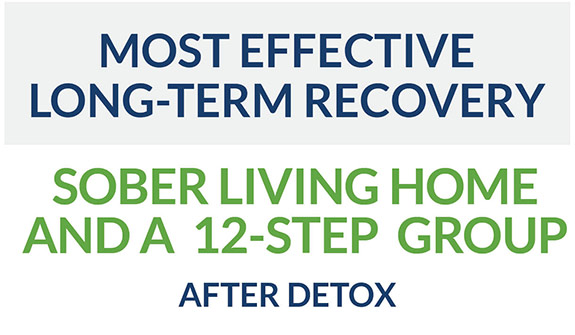Read the latest and greatest from our team
of incredible specialists.

Beach House Recovery Center » Blog » Drug Use in College: How It’s Influenced by Peer Pressure
Starting higher education is stressful for both the new student and the family left at home. Parents, especially, worry about the influences their child might encounter. All those horror stories about binge drinking in college and late-night drug parties. And what about prescription drug abuse in college students? While many people consider it a seniors’ issue, a 2014 study from Purdue University ranked prescription drugs as the most commonly abused substance (after alcohol and marijuana) starting at age 14. (Young adults, unlike their senior counterparts, frequently obtain opiate painkillers for the specific purpose of getting high, and crush the pills for a fast-and-intense effect which increases the risk of addiction.)
Will the clean-cut college student who never touched drugs need to be screened for signs of drug abuse upon returning home for Thanksgiving? What to tell a naïve 18-year-old about how to deal with peer pressure in college?

More students than not are in fact guilty of underage drinking in college. According to New York University’s Department of Applied Psychology, over 80 percent of college students drink alcohol at least biweekly, and more than 30 percent binge (have four or more drinks at a time) on occasion. According to the National Institute on Alcohol Abuse and Alcoholism, drinking-related accidents kill 1,825 college students annually, and thousands more are hospitalized with alcohol poisoning. As for actual alcoholism in college students, it affects at least 6 percent of the total population.
Surprisingly, 18–22-year-olds not enrolled in formal education drink far less, suggesting that college drinking is encouraged by a campus environment. An unpleasant piece of news for parents who thought drunkenness was largely restricted to dropout and blue-collar demographics, and that no one smart and hardworking enough to get into college could be stupid enough to assault a still-maturing brain with dangerous chemicals.
Reasons campus life may encourage alcohol misuse (and other types of drug misuse) include:
There’s little doubt that peer pressure of the worst kind thrives under these conditions. And besides out-and-out pressure, students are vulnerable to “more subtle components [including] peer drug associations, peers as points of drug access, and the motivation to misuse prescription drugs to have pleasant times with friends” (Brian Kelly, director, Center for Research on Young People’s Health, Purdue University).
Peer influence and peer pressure also come from sources besides pass-the-bottle parties:
So, even the geekiest student isn’t necessarily beyond the reach of drug-use influences.
 All that said, peer pressure has two sides. As a drug-using peer group can lead students into addiction, a healthier-minded peer group can influence students toward staying sober, and toward getting sober if addiction is already a problem:
All that said, peer pressure has two sides. As a drug-using peer group can lead students into addiction, a healthier-minded peer group can influence students toward staying sober, and toward getting sober if addiction is already a problem:
(It’s important to arrange for continued contact with peer-support groups before leaving a sober house to return to a college dorm. Going back to campus means re-experiencing the shock of transitioning from a tightly regulated environment to a looser one, and possibly being subjected to addiction-related stigma which could encourage relapse.)
In closing, here are a few tips on how to avoid peer pressure in college (or anywhere else) that could lead to a drug problem:
SOURCES
American Academy of Child and Adolescent Psychiatry (2018, March). “Peer Pressure.” Retrieved from https://www.aacap.org/AACAP/Families_and_Youth/Facts_for_Families/FFF-Guide/Peer-Pressure-104.aspx
CampusClarity.com (2013, December 23). “You Can’t Be an Alcoholic if You’re in College, Right?” Retrieved from https://home.campusclarity.com/you-cant-be-an-alcoholic-if-youre-in-college-right/
DePaul University (2015, September 21). “Substance Abuse Recovery Odds Increase in a Community Setting.” Retrieved from https://docs.wixstatic.com/ugd/195f09_2a36f194e3174ba59b247e8293f69878.pdf
National Institute on Alcohol Abuse and Alcoholism (2015, December). “College Drinking.” Retrieved from https://pubs.niaaa.nih.gov/publications/CollegeFactSheet/Collegefactsheet.pdf
Neubert, Amy Patterson (2014, August 18). “Study: Peers, But Not Peer Pressure, Key to Prescription Drug Misuse Among Young Adults.” Purdue University News. Retrieved from https://www.purdue.edu/newsroom/releases/2014/Q3/study-peers,-but-not-peer-pressure,-key-to-prescription-drug-misuse-among-young-adults.html
Palmeri, Josephine M. (2018). “Peer Pressure and Alcohol Use Amongst College Students.” NYU-Steinhardt Department of Applied Psychology. Retrieved from https://steinhardt.nyu.edu/appsych/opus/issues/2011/fall/peer
Polcin, DL, R Korcha, J Bond, and G Galloway (2010, January 1). “Eighteen Month Outcomes for Clients Receiving Combined Outpatient Treatment and Sober Living Houses.” Journal of Substance Use, Vol. 15, No. 5, pp. 352–366. Retrieved from https://www.ncbi.nlm.nih.gov/pubmed/21197122
Sather, Rita, and Amit Shelat, medical reviewers. “Understanding the Teen Brain.” University of Rochester Medical Center Health Encyclopedia. Retrieved from https://www.urmc.rochester.edu/encyclopedia/content.aspx?ContentTypeID=1&ContentID=3051
Scott, Alison, Ashton Anderson, Kristen Harper, and Moya L. Alfonso (2016, November 1). “Experiences of Students in Recovery on a Rural College Campus: Social Identity and Stigma.” SAGE Open. Retrieved from http://journals.sagepub.com/doi/full/10.1177/2158244016674762
Szalavitz, Maia (2012, May 14). “DSM-5 Could Characterize 40% of College Students as Alcoholics.” TIME.com. Retrieved from http://healthland.time.com/2012/05/14/dsm-5-could-mean-40-of-college-students-are-alcoholics/
Whether you’re researching for yourself or a loved one, Beach House can help. We understand that this is a serious time in your life and that the treatment center you choose matters. We want you to feel comfortable and empowered to make the right decision for yourself, a friend, or a family member. This is why a counselor is waiting and available to answer your questions and help put your mind at ease regarding the next steps. Many of the staff at Beach House have walked in your shoes. If you feel you’re ready or want more information about how to help a loved one, we can help today. You can also learn why we are voted the #1 rehab for addiction treatment in Florida.
We accept most major insurance plans and can verify your benefits quickly and confidentially.
We’re committed to helping you access the care you need, our admissions counselors can guide you through your coverage options and available resources.





"*" indicates required fields